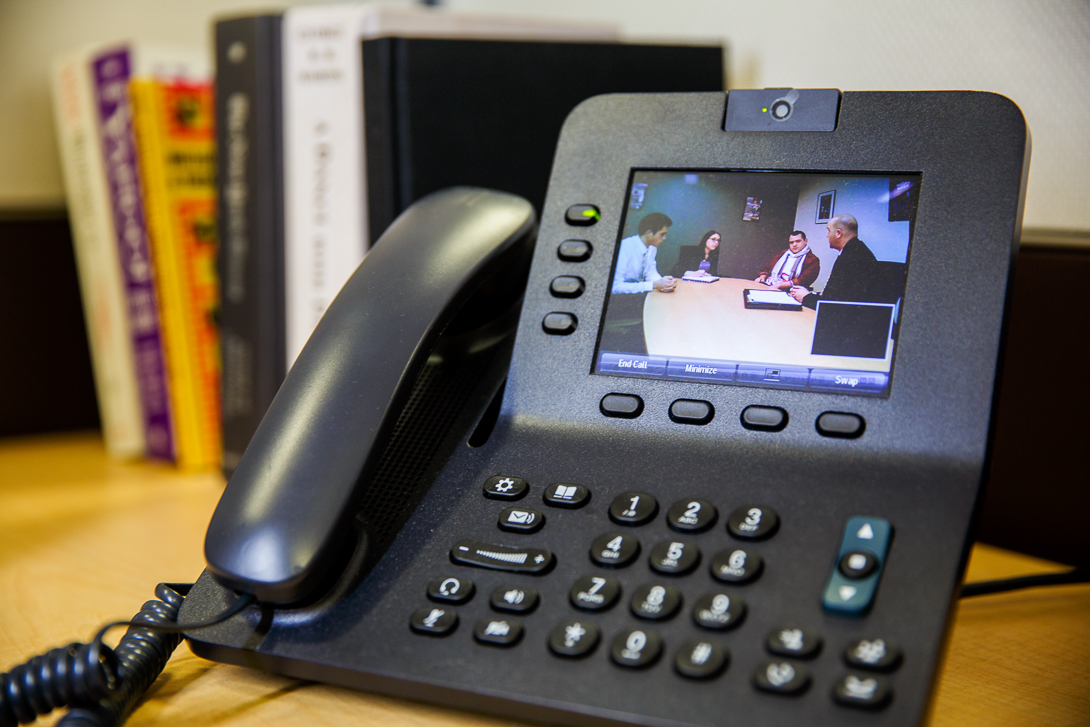By Kristen Mitchell
Employers are increasingly turning to video interviews to evaluate job applicants, however limited research on the subject shows that face-to-face meetings leave both parties more satisfied.
George Washington University researchers analyzed 12 studies on technology and job interviews published between 2000 and 2007 and believe that the absence of body language, eye contact and rapport building in video interviews can hurt a person’s chance of landing the job. The interviewee is also more likely to view the organization less favorably, said Nikki Blacksmith, a doctoral candidate in the Department of Organizational Sciences and Communication.
Ms. Blacksmith’s paper on technology-mediated interviews, “Technology in the Employment Interview: A meta-Analysis and Future Research Agenda,” was published July 25. The paper was co-authored by Associate Professor of Industrial-Organizational Psychology Tara S. Behrend and doctoral candidate Jon C. Wilford, members of GW’s Workplaces and Virtual Environments lab.
Awkward camera angles, lag time and video freezes can lead to miscommunications that often reflect poorly on those involved, even when the technology bugs are not reflective of a person’s communication skills.
“Eye contact, which is a really important form of education, gets lost in there,” Ms. Blacksmith said. “These issues can change an interviewee’s behavior, or the way the interviewer perceives the interviewee.”
In-person interviews are the best option for those looking to land a new job, followed by phone interviews and lastly video calls, analysis shows. This is something that both employers and interviewees should keep in mind.
“If they have a choice, and often they don’t, but if they have a choice to go in person, go in person,” Ms. Blacksmith said.
While the use of video technology in job interviews has become mainstream over the last several years, there is little published data on the subject, Ms. Blacksmith said. Technology has a documented impact on the outcome of an interview and how the parties view one another, but the reasons behind that remain a mystery.
“We only know overall ratings are lower, but we don’t why are those ratings lower, we need to dig a little deeper,” Ms. Blacksmith said.
This has the potential to be problematic for companies who might pass over qualified candidates who made a less favorable impression on video compared to one who interviewed in person.
“This is a real big issue because when we think about hiring positions, there has to be consistency,” Ms. Blacksmith said. “We don’t know for sure if there are fairness issues, but this research points to the fact that there could be.”
Some companies like Goldman Sachs are moving toward pre-recorded video interviews for first-round applicants to root out bias by asking the same set of questions in the same format. The move will create a level of consistency that wasn’t present in in-person interviews performed on campus, said Michael McKenzie, managing director for Career Learning & Experience at the Center for Career Services.
Mr. McKenzie advises GW students to prepare for job interviews by using the technology they will use in a formal setting. For video calls, our coaches tell students to treat it like an in-person interview by dressing and behaving like they were walking into a real office, but to formulate more concise answers.
“Without non-verbal cues in a phone interview, you’re going to have a hard time tracking interest levels, so you need to keep those answers shorter and offer to elaborate on key points,” Mr. McKenzie said.
Technology allows students and employers to look at options outside their immediate regions, however, which is a positive change, Mr. McKenzie said.
“It does broaden that opportunity, Employers only have the bandwidth or budget go to a limited number of target schools and, if the employer can’t pay for travel, many students have limited budgets. This allows employers to look at broader range of students and vise versa,” Mr. McKenzie said.
Students can practice their skills at the Career Services by participating in mock interviews and recording practice answers, Mr. McKenzie said.
Mr. McKenzie said Career Services works with students to practice various types of interview methods, so they understand the differences and can adjust their communication styles appropriately.
“We strongly believe that practicing your interview questions via mock interviews, solid research on industries and employers, and networking can overcome some of these biases and get GW students through second-round in-person interviews,” he said.


